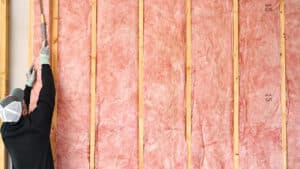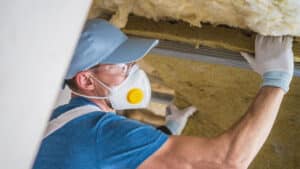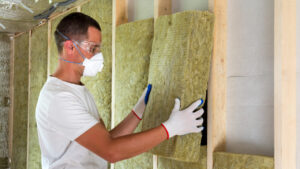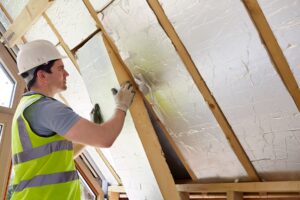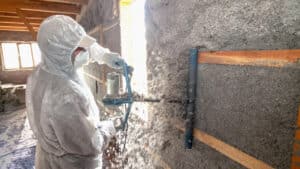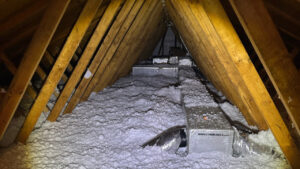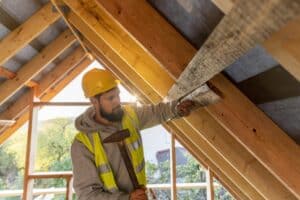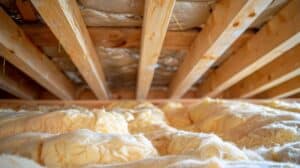Fire safety in your home is crucial, especially in often-overlooked areas like crawl spaces. Choosing the right fire-resistant insulation for your crawl space can protect your home from disasters and improve energy efficiency.
This article will cover the importance of fire-resistant insulation, recommended types for crawl spaces, and key installation considerations. By the end, you’ll understand how to select and install insulation that safeguards your home against fire risks while effectively managing moisture and heat in your crawl space.
Importance of Fire-Resistant Insulation
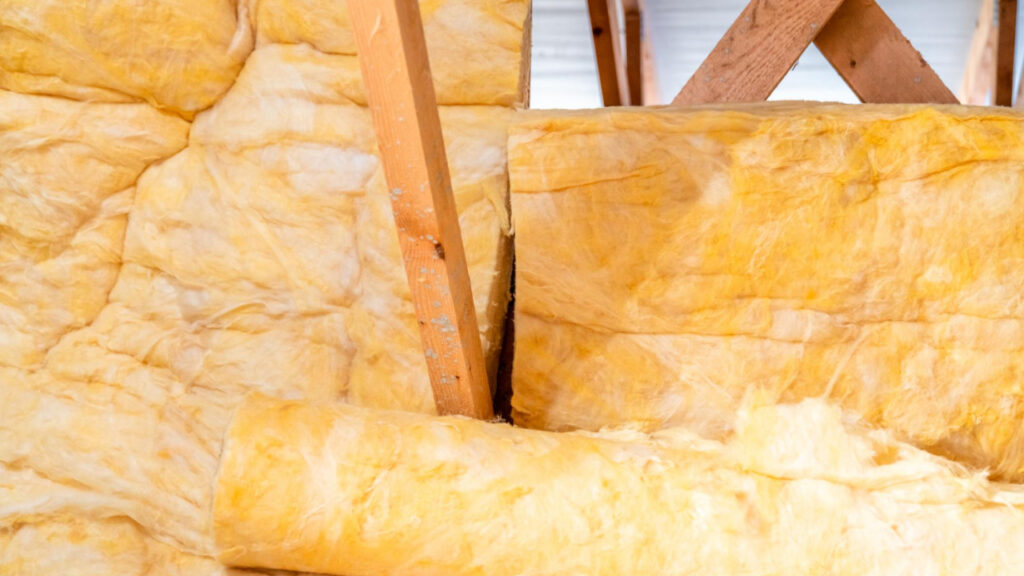
Fire-resistant insulation in crawl spaces is crucial for protecting homes from potential fire hazards. This type of thermal insulation acts as a barrier, slowing the spread of flames and providing valuable time for evacuation. It also helps preserve the structural integrity of floor joists during a fire event.
When selecting fire-resistant insulation, homeowners should consider materials that offer both fire protection and pest resistance. Some insulation types can deter termites and other pests, providing dual benefits for crawl space protection. Additionally, a proper vapor barrier should be installed alongside the insulation to prevent moisture issues.
The importance of fire-resistant insulation extends beyond safety considerations. It can also contribute to energy efficiency and comfort in the home. Here’s a comparison of common fire-resistant insulation materials:
| Insulation Type | Fire Resistance | Pest Resistance | Moisture Control |
|---|---|---|---|
| Mineral Wool | High | Moderate | Good |
| Fiberglass | Moderate | Low | Fair |
| Cellulose | Moderate | High | Good |
Recommended Insulation Types
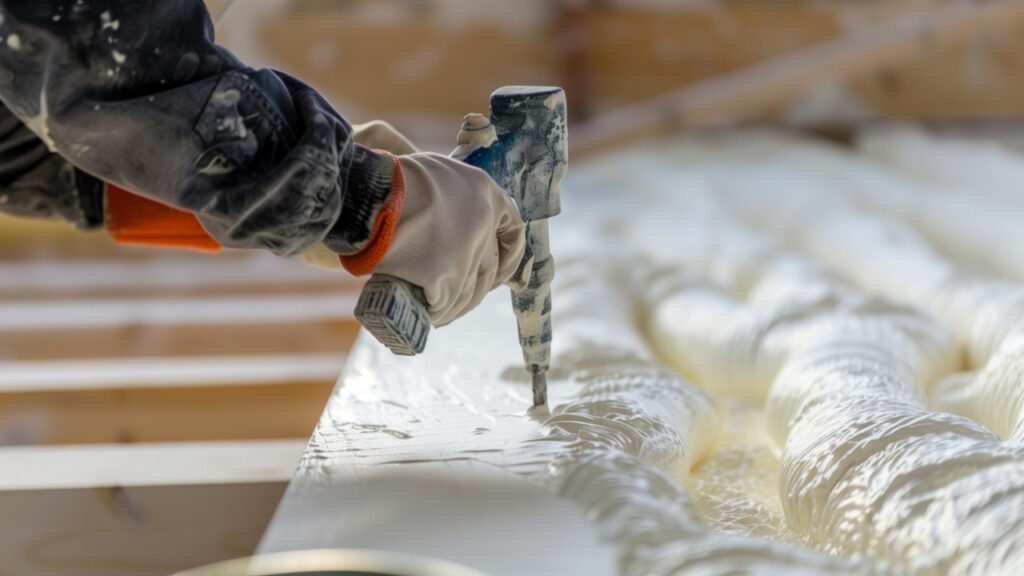
When selecting fire-resistant insulation for crawl spaces, homeowners have several options to consider. Spray foam, rigid foam board, fiberglass, mineral wool, and cellulose insulation each offer unique benefits for fire protection, mold resistance, and waterproofing. The choice depends on factors such as moisture control, duct insulation needs, and overall crawl space conditions.
Spray Foam Insulation
Spray foam insulation offers excellent fire resistance and moisture control for crawl spaces. This versatile material adheres to surfaces, creating a seamless barrier that prevents water intrusion and pest infiltration.
While not typically used in attics or on roofs, spray foam excels in sealing gaps and cracks in crawl spaces, enhancing overall home energy efficiency and complementing pest control efforts.
Rigid Foam Board Insulation
Rigid foam board insulation provides excellent fire resistance and moisture control for crawl spaces in Hampton Roads homes. This insulation type effectively prevents fungus growth and creates a barrier between the floor and basement space.
Homeowners often choose rigid foam boards for their durability and ability to maintain a consistent temperature in the crawl space, contributing to overall energy efficiency.
Fiberglass Insulation
Fiberglass insulation offers effective fire resistance and energy conservation benefits for crawl spaces. Its moisture-resistant properties help prevent water damage and maintain optimal humidity levels, contributing to improved indoor air quality.
Regular inspection of fiberglass insulation ensures its continued performance in protecting against heat transfer and maintaining a comfortable living environment. For more details on maintaining or upgrading your insulation, consider exploring insulation checklist.
Mineral Wool Insulation
Mineral wool insulation offers exceptional fire resistance and sound-dampening properties, making it an excellent choice for crawl spaces. This material, made from recycled materials and rock, provides effective heat transfer reduction and contributes to improved energy efficiency.
Homeowners considering mineral wool should schedule an energy audit to determine the optimal insulation strategy for their crawl space, as it can complement other insulation types like cellulose insulation. Here’s a comparison of mineral wool with other common insulation materials:
| Property | Mineral Wool | Fiberglass | Cellulose |
|---|---|---|---|
| Fire Resistance | Excellent | Good | Good |
| Sound Dampening | Excellent | Good | Very Good |
| Moisture Resistance | Good | Fair | Fair |
| Impact on Wood Structures | Minimal | Minimal | Potential for moisture retention |
Cellulose Insulation
Cellulose insulation offers a cost-effective and environmentally friendly option for crawl space fire protection. Made from recycled paper products treated with fire-retardant chemicals, cellulose provides excellent thermal performance and sound-dampening properties. Homeowners considering crawlspace encapsulation can benefit from cellulose’s ability to fill gaps and irregularities, creating a tight seal against air infiltration and moisture.
When comparing cellulose to other insulation types like mineral wool, homeowners should consider factors such as budget, installation method, and potential odor concerns. Here are key points to consider when choosing cellulose insulation for crawl spaces:
- Excellent fire resistance due to borate treatment
- High R-value per inch, offering superior thermal performance
- Pest-resistant properties that deter insects and rodents
- Ability to conform to irregular spaces, reducing air leakage
- Potential for settling over time, requiring periodic maintenance
Installation Considerations
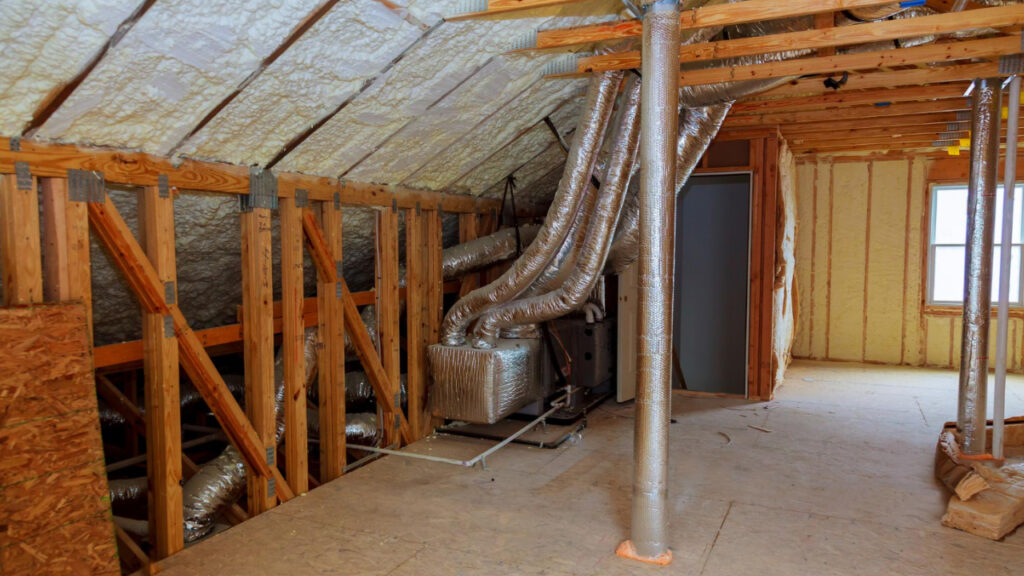
The following factors are crucial for effective home insulation services and foundation repair. Proper installation ensures a protective barrier in the crawlspace, enhancing both safety and energy efficiency. Understanding these aspects helps homeowners make informed decisions about their insulation needs.
Moisture Control
Effective moisture control is crucial when installing fire-resistant insulation in crawl spaces. A proper vapor barrier, placed over the soil, prevents ground moisture from compromising the crawl space foundation and insulation.
Homeowners should consider a radiant barrier in conjunction with crawlspace insulation to enhance energy efficiency and moisture management. The following table outlines key moisture control measures for crawl space insulation:
| Measure | Purpose | Application |
|---|---|---|
| Vapor Barrier | Prevent ground moisture infiltration | Cover soil and foundation walls |
| Proper Ventilation | Reduce humidity levels | Install vents or dehumidifier |
| Radiant Barrier | Reflect heat and manage moisture | Apply to floor joists |
| Drainage System | Divert water away from the foundation | Install French drains or sump pump |
Fire Safety Compliance
Compliance with fire safety regulations is essential when installing insulation in crawl spaces. Proper ventilation and drainage systems contribute to both fire safety and efficiency, reducing moisture buildup that can compromise insulation effectiveness.
Homeowners should consult with a professional insulation contractor to ensure their crawl space meets local building codes and fire safety standards. This may include installing a dehumidifier to maintain optimal moisture levels and improve overall efficiency. Key considerations for fire safety compliance include:
- Selecting insulation materials with appropriate fire ratings
- Installing proper ventilation systems to reduce humidity and fire risk
- Ensuring electrical wiring meets safety standards
- Implementing adequate drainage solutions to prevent water accumulation
- Regular inspections to maintain fire safety compliance
Access for Maintenance
When installing fire-resistant insulation in crawl spaces, homeowners must consider access for maintenance. Adequate access points allow for routine inspections of the foundation, plumbing, and electrical systems.
Proper planning ensures that insulation materials, such as mineral wool, do not obstruct access to critical areas. This foresight facilitates future repairs and upgrades to the home’s infrastructure:
| Access Point | Purpose | Considerations |
|---|---|---|
| Crawl Space Door | General Entry | Size, Location, Insulation |
| Floor Hatches | Targeted Access | Sealing, Insulation Continuity |
| Removable Panels | Plumbing/Electrical Access | Easy Removal, Proper Labeling |
| Inspection Ports | Foundation Checks | Strategic Placement, Clear Visibility |
Universal Insulation Doctor’s Professional Insulation Services

At Universal Insulation Doctor, we know that old attic insulation can be a hidden health risk in your home. Our team specializes in safely removing outdated, hazardous attic insulation and replacing it with safe, energy-efficient alternatives.
Serving Chesapeake and surrounding areas for over ten years, we are proud to have an A+ rating from the Better Business Bureau, reflecting our commitment to quality and customer satisfaction.
Whether it’s asbestos, mold, or general wear, we’re equipped to handle every insulation concern safely and professionally.
Contact Universal Insulation Doctor today at 757-962-0340 to schedule your inspection and ensure a healthier home environment.
Frequently Asked Questions
Which types of insulation offer the best fire resistance for crawl spaces?
Fiberglass and mineral wool insulation offer excellent fire resistance for crawl spaces. These materials are naturally non-combustible and can help slow the spread of flames. Additionally, cellulose insulation treated with fire retardants provides good fire resistance while also being an eco-friendly option for crawl space insulation.
What factors should be considered when installing fire-resistant insulation in crawl spaces?
When installing fire-resistant insulation in crawl spaces, consider factors such as local building codes, moisture control, ventilation requirements, insulation R-value, and material compatibility with existing structures. Proper installation techniques and sealing gaps are crucial for optimal performance and fire safety in these confined areas.
Are there any special requirements for fire-resistant insulation in building codes?
Building codes often require fire-resistant insulation in specific areas of a structure, such as between living spaces and attached garages or in multi-unit dwellings. These codes may specify materials with certain fire ratings to enhance safety and slow fire spread.
How do I choose the right R-value for my crawlspace insulation?
The R-value depends on your climate and specific insulation needs. In colder areas, a higher R-value (such as R-19 to R-30) helps retain warmth, while milder climates may only require R-13. Check local building codes, as they often recommend the best R-value for energy efficiency. Also, consider whether your crawlspace is ventilated or not—unventilated spaces typically need higher R-value insulation to fully seal out moisture and temperature changes.
What are the maintenance considerations for crawlspace insulation?
Regularly check your crawlspace insulation for signs of moisture, mold, or pests, as these can reduce its effectiveness. Ensure that any vents or vapor barriers are intact to keep out moisture. Also, look for sagging or damaged insulation, which might need replacement. Periodic inspections, especially after extreme weather, help maintain insulation efficiency and prevent issues like mold or rot.

